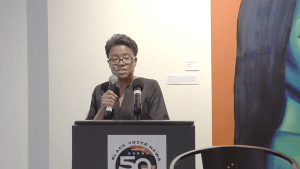By Ethan Ashley
Education has always been a contentious issue, but as we approach the 2024 elections, it’s become ground zero for broader cultural and political clashes. Book bans targeting diverse and inclusive materials are on the rise, and restrictive gag orders are silencing classroom discussions on critical topics like race, gender and American history.

With the conservative agenda of Project 2025 gaining traction, the threat to both democracy and public education has never been more urgent. In times like these, it’s easy to feel powerless—but, as citizens, we can’t afford to disengage. The fight for our country’s future begins at the local level, particularly with our school boards.
Though often overlooked, school boards are the backbone of our democratic process, influencing the education of nearly 90 percent of America’s children who attend public schools. Their decisions determine everything from which books make it into classrooms to the curriculum that teaches civics and voter education. They are the gatekeepers of academic freedom and have a crucial role in shaping young people’s understanding of democracy. School boards are responsible for dismantling the remnants of systemic racism in education and laying the foundation for future citizens who will either uphold or dismantle democratic values.
That’s why who sits on our school boards is so critical. Diverse representation on these boards ensures a variety of perspectives, particularly when it comes to identifying inequities and implementing inclusive policies.
However, school boards in the U.S. were designed in a different era, for a different demographic. Historically led by white, male landowners, school boards have not evolved to reflect the diversity of the communities they now serve. Today, although public school students are more than 55 percent students of color, a 2022 survey by School Board Partners found that 64 percent of school board members are white, highlighting a significant gap in representation.
This May the nation celebrated the 70th anniversary of the U.S. Supreme Court decision in Brown v. Board of Education, the decision that outlawed segregation based on race in public schools. At the time of the ruling, roughly 90 percent of students were white. Since then, public school demographics in America have continued to morph into being more racially and ethnically diverse: less than half of students are white, meaning that about 55 percent of public school students identify as minority populations, with more than a quarter being Hispanic, and nearly 15 percent being Black. These numbers don’t even account for non-English native language speakers, students with disabilities, students identifying as part of the LGBTQ community, or students in varying socioeconomic backgrounds.
Across the country this fall, people will go to the polls and cast votes that will have a major impact on the future of our country. With over 21,000 seats up for election this year, School Board Partners is among the groups working to ensure voters realize the importance of school board elections specifically.
The reality is that the tensions we’re witnessing around education will continue to compound — but we have the collective power to choose a better future by electing a more diverse candidate pool who will advocate for policies and procedures that meet the needs of students, no matter their background. By nature and design, school boards were established by the people, for the people. It’s time to bring our school boards into the present and deliver on that founding promise. The future of democracy depends on it.
This op-ed was originally published by Word in Black.
The post Concerned about democracy? Your school board could hold the key appeared first on AFRO American Newspapers.











